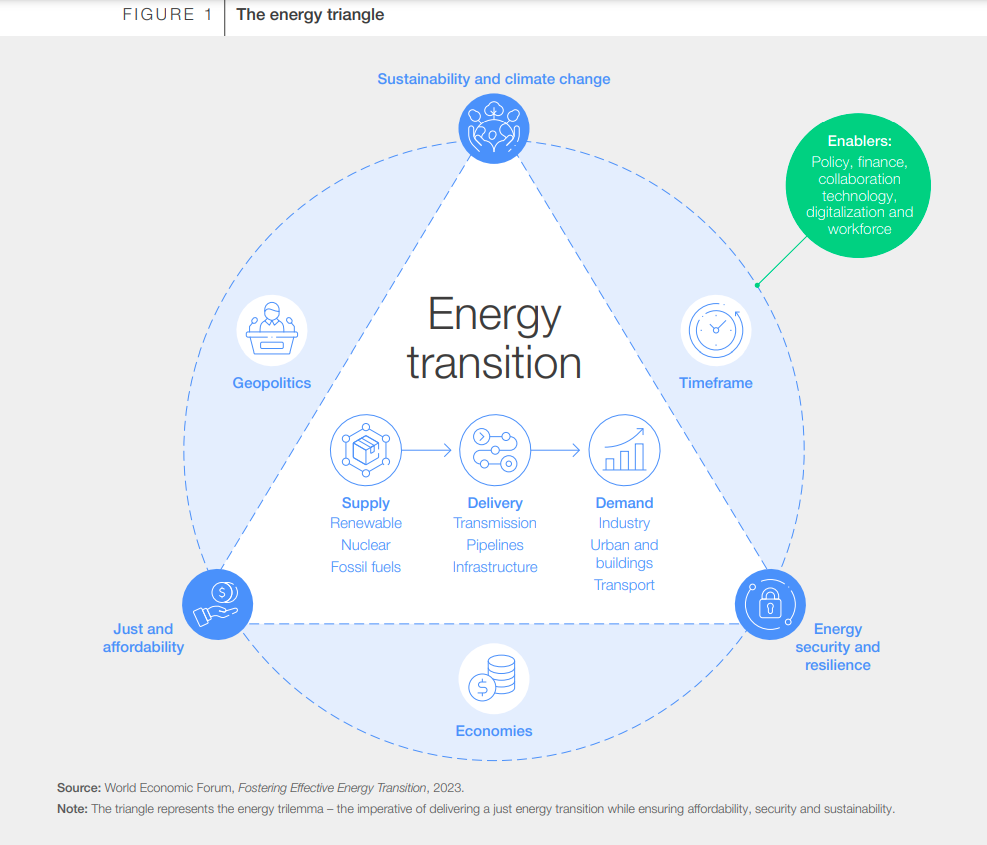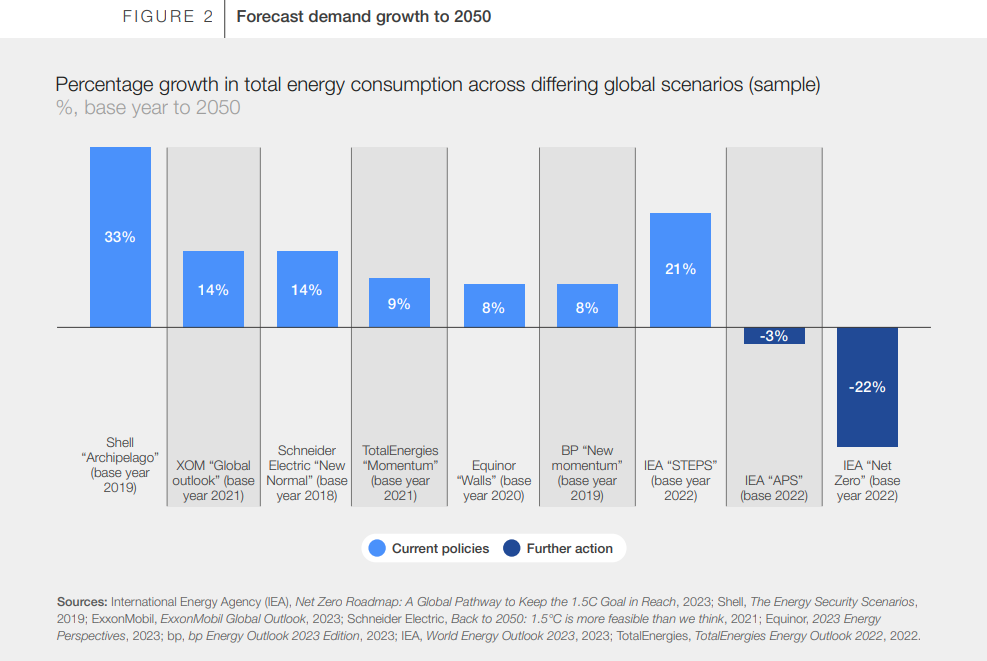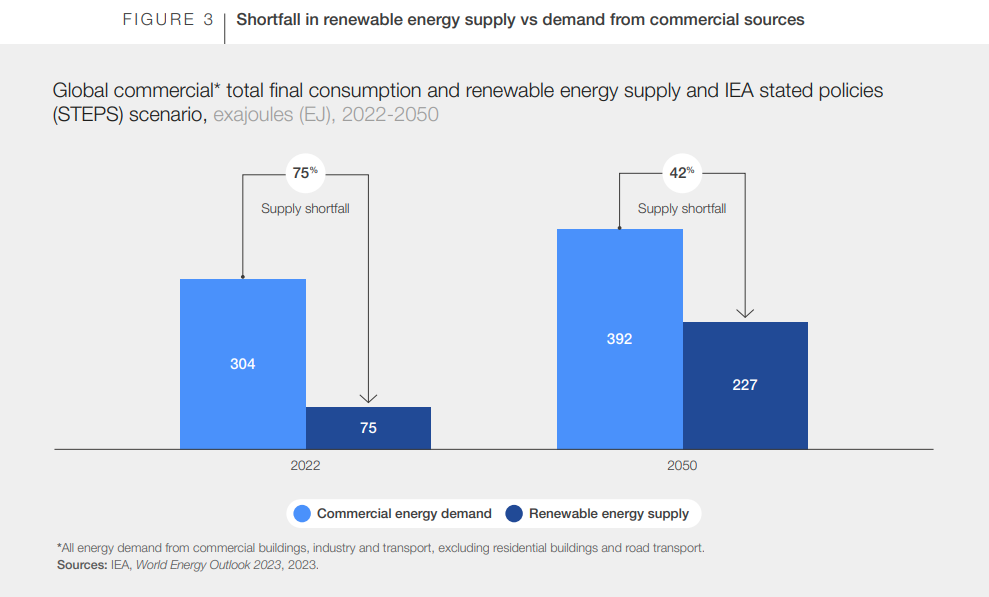These charts reveal why targeting energy demand is vital to addressing the climate crisis


· 4 min read
Energy demand – how much energy we use – is a surprisingly under-explored area in the drive to cut carbon emissions and fight the climate crisis. But for energy users who take action in this area, there is “extraordinary potential,” the World Economic Forum says.
In a new white paper, Transforming Energy Demand, the Forum estimates that energy demand could be cut by 31% across all sectors, saving $2 trillion a year, if businesses take action on energy demand by 2030.
The upsides for companies include saving cash and maintaining competitive advantage – while reducing emissions.
In three charts, the Forum sets out the key challenges that make transforming energy demand critical to meeting climate goals.
The first chart shows the energy ‘trilemma’ – the three-pointed challenge of maintaining energy security, while keeping energy affordable – and also trying to meet climate targets.
On energy security, growing geopolitical volatility is a challenge to maintaining secure and stable energy supplies.
Europe experienced this in the energy crisis of 2021-22, when shortages as a result of the conflict in Ukraine pushed energy prices to new highs.
This threatened industry, and governments had to use oil and gas that was due to be sent to other emerging markets and developing economies. These developing economies in turn had to use more coal to meet their energy needs – and faced higher energy prices.

The second chart from Transforming Energy Demand shows a range of forecasts for predicted rise in energy consumption by 2050.
Energy needs to be affordable for both businesses and society in general. But this is particularly challenging when economies and populations are growing.
By 2050, global gross domestic product – the total value of the world’s goods and services – is expected to double. The world’s population is also expected to grow by another 2 billion people.
This will intensify pressure on energy supply systems, especially in emerging markets and developing economies, which account for about 60% of energy demand currently.
To grow, these economies need “abundant access to affordable clean energy,” the Forum says. Otherwise, if future energy supplies can’t meet demand, it could lead to higher prices and obstacles to growth and competitiveness.

The third chart shows the shortfall in renewable energy supplies today and by 2050 for commercial buildings, industry and transport.
This highlights the sustainability challenge – how to meet growing energy demand, while staying on track to meet climate targets to limit global warming. Even with a three-fold growth in renewable energy supply, a 42% shortfall is predicted by 2050.
Fossil fuel-based energy could end up filling this gap – especially in emerging markets and developing economies which don’t have adequate renewable supply chains.

Combined, these three energy challenges show the imperative of addressing energy demand as well as energy supply.
Most climate action so far has focused on energy supply – including rapid increases in zero emissions electricity generation.
But with the transition to a sustainable energy system still off track, Transforming Energy Demand calls for all companies to take action now on energy demand, including reducing the energy intensity – the amount of energy used – in current and future activity.
Existing and affordable technologies already exist to do this, the Forum says. For example, using artificial intelligence to reduce energy consumption by better predicting environmental conditions. In industry, interventions such as high-efficiency electric motors can reduce the amount of energy used in industrial processes by up to 90%.
Other energy demand solutions include heat recovery and reuse, and behaviour change – such as training staff to reduce waste and energy use.
This article was originally published by the World Economic Forum. illuminem Voices is a democratic space presenting the thoughts and opinions of leading Sustainability & Energy writers, their opinions do not necessarily represent those of illuminem.
Jonathan Lishawa

AI · Energy Transition
Olaoluwa John Adeleke

Power Grid · Power & Utilities
Alex Hong

Energy Transition · Energy
Financial Times

Power Grid · Power & Utilities
The Guardian

Oil & Gas · Upstream
Eurasia Review

Hydrogen · Energy